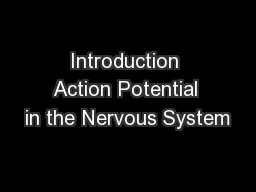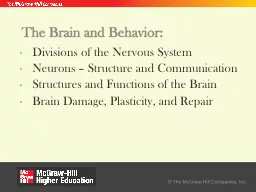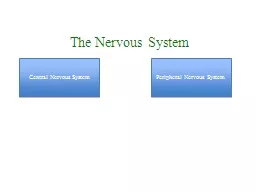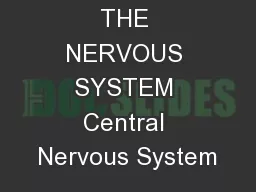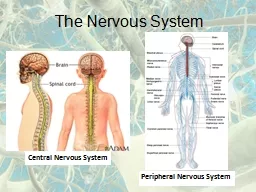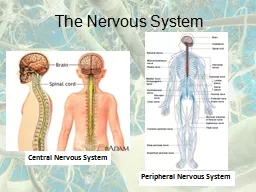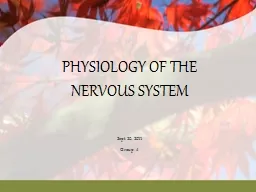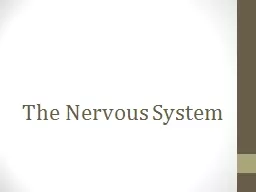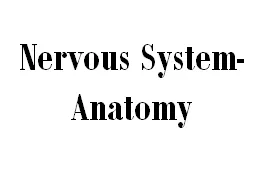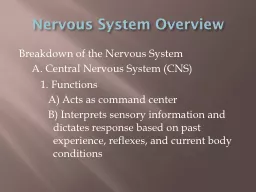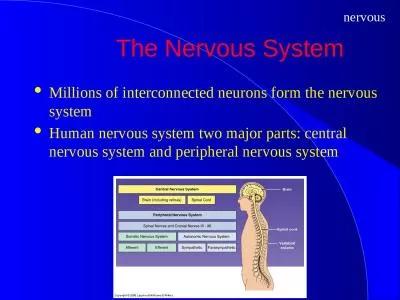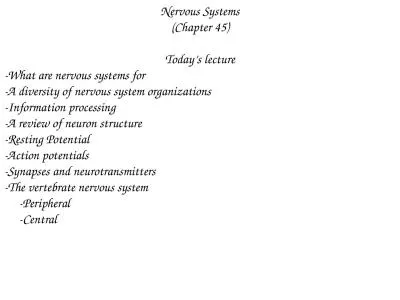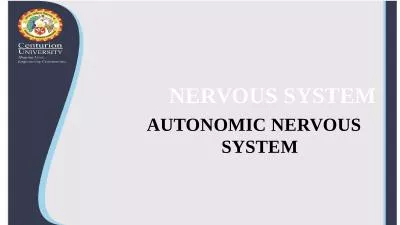PPT-Introduction Action Potential in the Nervous System
Author : sherrill-nordquist | Published Date : 2018-11-05
Conveys information over long distances Cytosol has negative charge relative to extracellular space Neural code frequency and pattern Action potential Spike Nerve
Presentation Embed Code
Download Presentation
Download Presentation The PPT/PDF document "Introduction Action Potential in the Ner..." is the property of its rightful owner. Permission is granted to download and print the materials on this website for personal, non-commercial use only, and to display it on your personal computer provided you do not modify the materials and that you retain all copyright notices contained in the materials. By downloading content from our website, you accept the terms of this agreement.
Introduction Action Potential in the Nervous System: Transcript
Download Rules Of Document
"Introduction Action Potential in the Nervous System"The content belongs to its owner. You may download and print it for personal use, without modification, and keep all copyright notices. By downloading, you agree to these terms.
Related Documents

